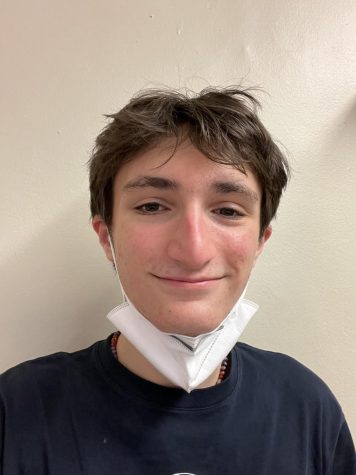Letter from the editor: It’s time to give student reporters freedom to cover more ground

February 11, 2021
Muckraking (or hard-hitting reporting) has been a part of journalism since the beginning of time. From Louis D. Brandeis to Jacob Riis to Ida B. Wells, muckraking has served to hold politicians and systems of government accountable, usually resulting in more attention towards an issue or problem.
I thought about this while I was reading an article on the 74 Million, an education website, which showcased multiple examples of students who have been limited to writing for their school newspapers but also forced real change as a result of well-written, hard-hitting exposés. One student reporter in Louisville, Kentucky even caused the resignation of a state police commissioner over the fallout of an article that revealed police training slides contained quotes from Adolf Hitler and advocated for ‘ruthless’ violence. All of this led me to this conclusion: There’s no reason hard-hitting journalism should only exist at The New York Times and Chicago Tribune.
Right now, from my three years being a high school journalist, I’ve noticed that too often, underfunded and abandoned high school newspapers has led to the silencing of the next generation of muckrakers. Even the student news outlets that publish often are limited to covering school sports events or other school news, and those that try to break outside that bubble are usually looked down upon or not taken seriously. While schoolwide coverage is good experience, and working for a school newspaper is a good resumé padder, it doesn’t adequately prepare the next generation of journalists for real-world reporting.
To groom students my age with a knack for reporting and getting to the bottom of a story, student journalists need a seat at the table.
I agree with the team at the 74 Million, that the first step needs to be passage in all 50 states of New Voices legislation, which gives all student journalists First Amendment rights and effectively undoes the restrictive ruling in the Supreme Court case Hazelwood v. Kuhlmeier, which paved the way for censorship in school publications.
The limitations on access for student reporters is another reason important stories aren’t being covered. Some student journalists have felt ignored. For example, when some pressed their school’s administration on COVID-19 positive test results within each community, confirmations have been hard to get. Student journalists are often the only thing between the school and the community and in a pandemic, confirming no positive tests on the campus is information that everyone needs to know.
Secondly, too often, student reporting is considered costly, burdensome and too much work for already-swamped students and faculty. To combat this, all public high schools should be required to teach journalism and should offer students access to a newspaper/news site. It slots in well with any English curriculum while also teaching high school students that they have a voice, and they can use it. Teaching deadlines, research, and how to find and analyze a source’s credibility can prove invaluable in the long run, especially in a time where media literacy is so needed.
Which is why I’m pleased to share that I’ve started the NYCOSE, or NYC Organization of Student Editors, a coalition of high school editors-in-chief that will meet monthly over Zoom to discuss the challenges facing student journalists today. When I was researching schools to reach out to, I was struck by how the media gap (schools that have a newspaper vs. schools that didn’t) reflects the ongoing disparities in our society, which is dismaying and worrisome to me. This reason alone convey show necessary it is for ALL student journalists–regardless of race, gender, class and sexual orientation, to have a seat at the table.
To get a better understanding of the issue, I reached out to three founding members of the coalition on what journalism means to them and why it’s so important that all student journalists have the freedom and access they deserve.
Nicole Meselsohn, the editor-in-chief of The Baysider newspaper at Bayside High School: “I think it’s important for journalism to be taught in high school because it opens students up to a new topic of interest for their future but also it would help them learn writing skills that will most definitely help them in any and all future endeavors.”
Wendolyn Duque, co editor-in-chief of the MVA Times, the student newspaper at Manhattan Village Academy: “Now more than ever students need to be taught ways to perceive the world so that they can then voice their complaints and be able to be part of change.”
Tigerlily Hopson, co editor-in-chief of East Sider News, the student news site at East Side Community High School: “Journalism gives students from every background and every walk of life a voice. It allows us to share our opinions and frustrations, and gives us a platform to highlight and uplift underrepresented stories.”
Ultimately, I find it dismaying that as many as 900,000 high school students in NYC don’t have access to a school newspaper, whether as a reader or as a writer, and only 30 of the 584 public high schools in the city attended the annual Baruch Journalism conference for high school students last year. That isn’t good, especially in a city where journalism is its lifeblood. I hope by creating this coalition, all of us will wake up to see the power of high school journalism.


